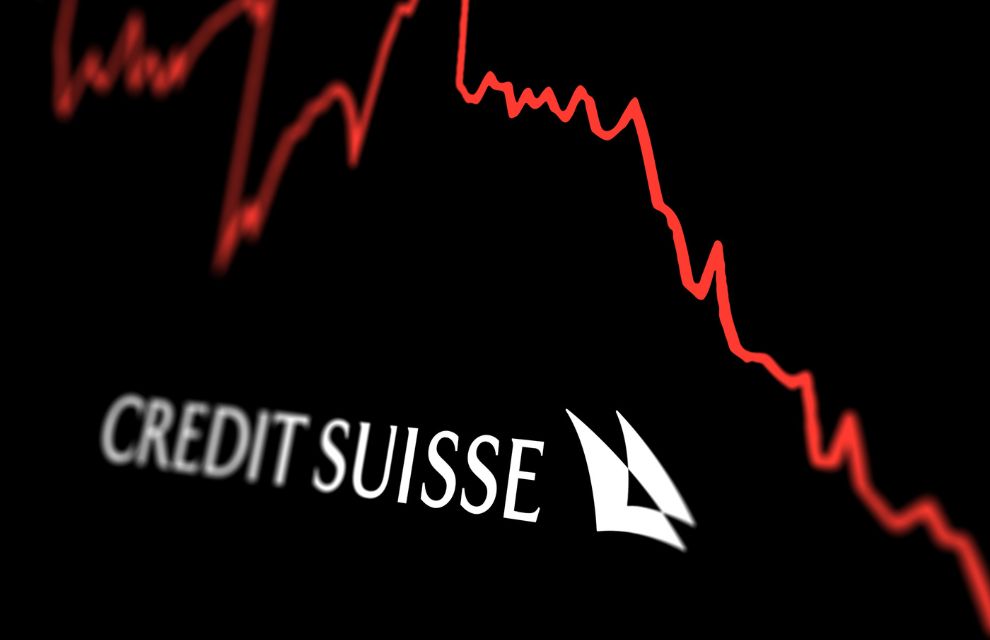EU supervisors confirm ranking in resolution waterfall following Credit Suisse takeover
21 March 2023 Switzerland
 Image: AdobeStock/ rarrarorro
Image: AdobeStock/ rarrarorro
The EU Single Resolution Board (SRB) has issued a statement confirming that holders of Additional Tier 1 (AT1) instruments should rank ahead of holders of common equity in case of resolution or insolvency of a banking institution in the Banking Union.
In a statement issued yesterday alongside the European Banking Authority and ECB Banking Supervision, the SRB clarified the order in which shareholders and creditors of a troubled bank should bear losses.
It confirmed that “common equity instruments are the first ones to absorb losses and, only after their full use, would Additional Tier 1 (AT1) be required to be written down”.
The SRB indicated that this same approach has been applied consistently in previous cases and will continue to define the actions of the SRB and ECB banking supervision in the case of crisis interventions.
This statement was made in response to UBS’ takeover of Credit Suisse, where holders of Credit Suisse AT1 bonds lost the value of their investment while shareholders in the ailing bank received close to US$3.25 billion. This treatment of Credit Suisse assets and liabilities in Switzerland differs from standard practice in most jurisdictions where bond holders, including Alternative Tier 1 bonds, rank ahead of common equity shareholders in the insolvency resolution waterfall.
The SRB emphasises that AT1 will remain an important component of the capital structure of European banks.
Similarly, the Bank of England confirmed that the UK’s bank resolution framework has a clear statutory order in which shareholders and creditors will bear losses in a resolution or insolvency scenario.
“This was the approach used for the recent resolution of SVB UK, in which all of SVB UK’s Additional Tier 1 and T2 instruments were written down in full and the whole of the firm’s equity was transferred for a nominal sum of £1,” says the Bank of England.
AT1 instruments rank ahead of CET1 and behind T2 in the hierarchy, explains the BoE: “Holders of such instruments should expect to be exposed to losses in resolution or insolvency in the order of their positions in this hierarchy.”
The Single Resolution Board is the central authority overseeing corporate resolution for the Banking Union, which currently includes 20 eurozone jurisdictions and Bulgaria. Alongside national regulatory authorities, this makes up the Single Resolution Mechanism which is responsible for promoting orderly resolution in the case of bank failure.
Working alongside the European Commission, the European Central Bank, the European Banking Authority and national resolution authorities, the SRB aims to promote financial stability and to protect the EU taxpayer from state bail outs.
In a statement issued yesterday alongside the European Banking Authority and ECB Banking Supervision, the SRB clarified the order in which shareholders and creditors of a troubled bank should bear losses.
It confirmed that “common equity instruments are the first ones to absorb losses and, only after their full use, would Additional Tier 1 (AT1) be required to be written down”.
The SRB indicated that this same approach has been applied consistently in previous cases and will continue to define the actions of the SRB and ECB banking supervision in the case of crisis interventions.
This statement was made in response to UBS’ takeover of Credit Suisse, where holders of Credit Suisse AT1 bonds lost the value of their investment while shareholders in the ailing bank received close to US$3.25 billion. This treatment of Credit Suisse assets and liabilities in Switzerland differs from standard practice in most jurisdictions where bond holders, including Alternative Tier 1 bonds, rank ahead of common equity shareholders in the insolvency resolution waterfall.
The SRB emphasises that AT1 will remain an important component of the capital structure of European banks.
Similarly, the Bank of England confirmed that the UK’s bank resolution framework has a clear statutory order in which shareholders and creditors will bear losses in a resolution or insolvency scenario.
“This was the approach used for the recent resolution of SVB UK, in which all of SVB UK’s Additional Tier 1 and T2 instruments were written down in full and the whole of the firm’s equity was transferred for a nominal sum of £1,” says the Bank of England.
AT1 instruments rank ahead of CET1 and behind T2 in the hierarchy, explains the BoE: “Holders of such instruments should expect to be exposed to losses in resolution or insolvency in the order of their positions in this hierarchy.”
The Single Resolution Board is the central authority overseeing corporate resolution for the Banking Union, which currently includes 20 eurozone jurisdictions and Bulgaria. Alongside national regulatory authorities, this makes up the Single Resolution Mechanism which is responsible for promoting orderly resolution in the case of bank failure.
Working alongside the European Commission, the European Central Bank, the European Banking Authority and national resolution authorities, the SRB aims to promote financial stability and to protect the EU taxpayer from state bail outs.
← Previous regulation article
Strong improvement in capital reserves and liquidity risk profiles key to banking resilience, says BCBS
Strong improvement in capital reserves and liquidity risk profiles key to banking resilience, says BCBS
Next regulation article →
Natixis picks Adenza’s solution to automate regulatory reporting in Hong Kong
Natixis picks Adenza’s solution to automate regulatory reporting in Hong Kong
NO FEE, NO RISK
100% ON RETURNS If you invest in only one securities finance news source this year, make sure it is your free subscription to Securities Finance Times
100% ON RETURNS If you invest in only one securities finance news source this year, make sure it is your free subscription to Securities Finance Times



